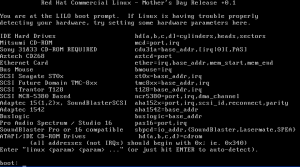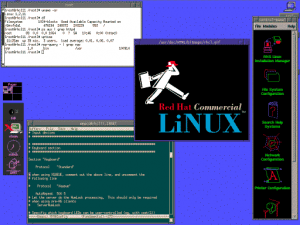The History of Linux (2 CD)
Date: 1993-1994
License: GPL
* Debian Linux 0.90 BETA, 1992/1993 (kernel 0.99pl14w)
* jurix (SuSE 4.2 pre-release), (kernel 1.3.91)
* Red Hat Linux – Mother’s Day Release 1.1, 1994/1995 (kernel 1.2.11)
* Slackware Linux 1.1.2, 1993/1994 (kernel 0.99.15)
* BOGUS Linux 1.0, 1994 (kernel 1.1.19)
* MCC Interim Linux 1.0+, 1994 (kernel 1.0.4)
* Softlanding Linux System 1.05, 1994 (kernel 1.0)
* Xdenu 2.0, 1993 (kernel 1.1.73)
The history of Linux traces back to the early 1990s and is intertwined with the efforts of Linus Torvalds, a Finnish computer science student. Here is a brief overview of the key milestones in the history of Linux:
Creation by Linus Torvalds (1991):
In 1991, Linus Torvalds, then a student at the University of Helsinki, began working on a new operating system kernel as a hobby project.
He posted a message on the comp.os.minix Usenet newsgroup, describing the project and seeking feedback. This announcement marked the birth of Linux.
Development and Open Source Model:
Linus released the first version of the Linux kernel (version 0.01) in September 1991.
Unlike proprietary operating systems, Linux was distributed under the GNU General Public License (GPL), which meant that the source code was freely available, and users were encouraged to modify and distribute their versions.
Growth of the Linux Community (Early 1990s):
A community of developers quickly formed around Linux, contributing code, bug fixes, and improvements.
The Free Software Foundation’s GNU tools and libraries were integrated with the Linux kernel to create a complete, functional operating system.
Introduction of Distributions:
Various organizations and individuals began packaging the Linux kernel with additional software and utilities, creating Linux distributions.
Some early distributions include Slackware (1993) and Debian (1993).
Adoption in the Enterprise (Late 1990s):
Linux gained popularity in the enterprise as a cost-effective and stable alternative to proprietary Unix systems.
Companies like Red Hat (founded in 1993) and SUSE (founded in 1992) emerged to provide commercial support for Linux distributions.
Kernel Development and Advancements:
Linus Torvalds continued to oversee the development of the Linux kernel, with new releases adding features, hardware support, and performance improvements.
Mobile and Embedded Systems:
Linux found success in the mobile and embedded systems space. The Android operating system, based on the Linux kernel, became widely used on smartphones.
Linux in Supercomputing and Cloud Computing (2000s):
Linux became a dominant force in supercomputing, running on a significant percentage of the world’s top supercomputers.
The rise of cloud computing further propelled Linux as a preferred choice for server environments.
Community Collaboration and Diverse Uses:
The open-source nature of Linux encouraged collaboration among developers worldwide, leading to its use in diverse applications, from servers and desktops to embedded systems and IoT devices.
Continued Evolution (2020s):
Linux continues to evolve, with regular updates to the kernel and widespread use in various domains, including server infrastructure, mobile devices, embedded systems, and cloud computing.
The history of Linux reflects the power of collaborative open-source development and the success of a community-driven approach to software development. Today, Linux is a foundational component of many technological ecosystems.

